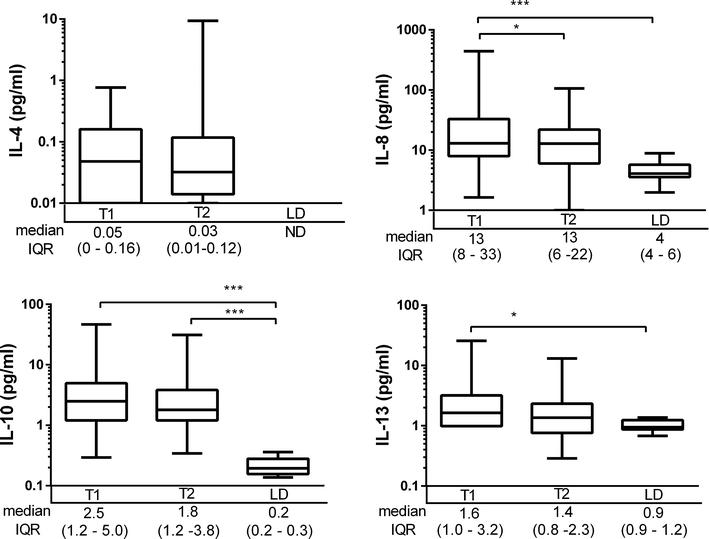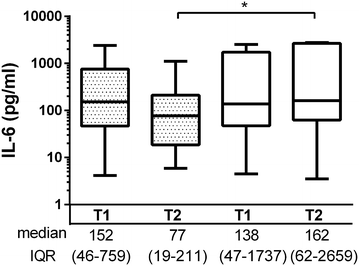Circulating resistin levels are early and significantly increased in deceased brain dead organ donors, correlate with inflammatory cytokine response and remain unaffected by steroid treatment
- PMID: 26112052
- PMCID: PMC4482041
- DOI: 10.1186/s12967-015-0574-1
Circulating resistin levels are early and significantly increased in deceased brain dead organ donors, correlate with inflammatory cytokine response and remain unaffected by steroid treatment
Abstract
Introduction: Resistin is a pro-inflammatory adipokine that increases after brain injury (trauma, bleeding) and may initiate an inflammatory response. Resistin was found increased in deceased, brain dead organ donors (DBD) and correlated with delayed graft function after kidney transplantation. The kinetics of resistin during brain death (BD), its impact on the inflammatory response and the influence of several donor variables on resistin levels are still unknown.
Methods: Resistin along with a panel of Th1/Th2 cytokines [interferon (IFN)-gamma, interleukin (IL)-1beta, IL-2, IL-6, IL-8, IL10, IL-12, IL-13 and tumor necrosis factor (TNF)] was analyzed in 36 DBDs after the diagnosis of BD and before organ procurement and in 12 living kidney donors (LD). The cytokine levels and resistin were analyzed in relation to donor parameters including cause of death, donors' age and steroid treatment.
Results: Resistin levels were higher in DBDs both at BD diagnosis and before organ procurement compared to LD (p < 0.001). DBDs had significantly increased IL-1beta, IL-6, IL-8, IL-10 and TNF levels at both time points compared with LD. In DBDs, resistin at BD diagnosis correlated positively with IL-1beta (rs 0.468, p = 0.007), IL-6 (rs 0.511, p = 0.002), IL-10 (rs 0.372, p = 0.028), IL-12 (rs 0.398, p = 0.024), IL-13 (rs 0.397, p = 0.030) and TNF (rs 0.427, p = 0.011) at procurement. The cause of death, age over 60 and steroid treatment during BD did not affect resistin levels. However, steroid treatment significantly decreased pro-inflammatory cytokines IL-1beta, IL-8, TNF and IFN-gamma at the time of organ procurement.
Conclusions: Resistin is increased early in DBDs, remains increased throughout the period of BD and correlates strongly with pro-inflammatory mediators. Resistin level, in contrast to cytokines, is not affected by steroid treatment. Resistin increase is related to the BD but is not influenced by age or cause of death. Resistin may be one of the initial triggers for the systemic inflammatory activation seen in DBDs.
Figures





References
Publication types
MeSH terms
Substances
LinkOut - more resources
Full Text Sources
Other Literature Sources
Medical
Research Materials

